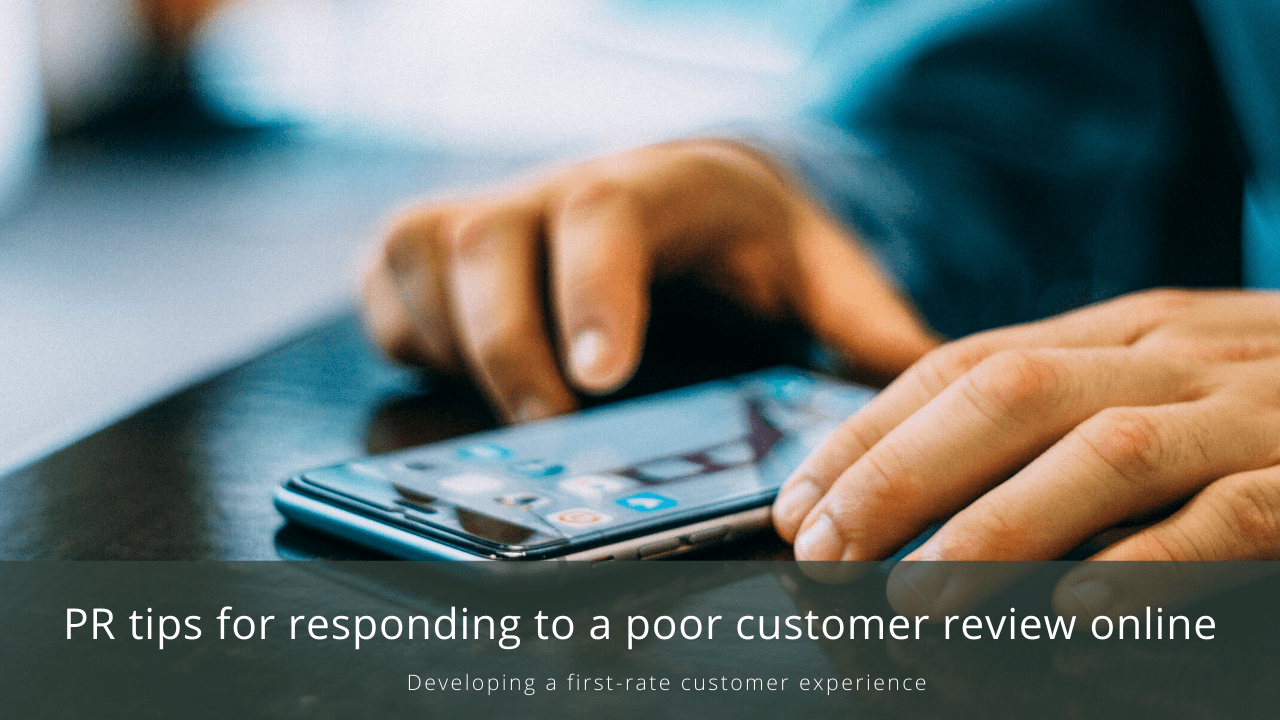It’s no secret that the majority of modern consumers rely heavily on review to make purchasing decisions. Recent studies show that more than 90% of people read reviews before buying. Around 84% even trust reviews as much as they would a personal recommendation from a close friend. Every company loves receiving positive feedback, but many underestimate the importance of negative reviews. Embracing negative reviews sounds counter-intuitive, so let’s take a closer look at how they can benefit your business.
How to turn poor customer reviews into positive PR?
As you’ve probably gathered by now, modern PR focuses on one key aspect – trust. Modern consumers are warier than ever of what they read online. Fake news is abundant, and people have started to question everything, including reviews. If a product or company only has glowing, 5-star reviews, many consumers will be sceptical.
It is common knowledge that less-reputable companies will sometimes pay for fake reviews to boost their image. This is also true for negative reviews that may have been left by a competitor or disgruntled ex-employee. However, fake reviews aside, negative feedback is not the end of the world.
Transparency is important
Firstly, by leaving negative reviews up you’re demonstrating that you’re a transparent organization. Today, this is critical, and nearly three-quarters say they’ll pay more if a brand is transparent. Should you react by deleting poor feedback, it will appear as if you have something to hide. What’s more, when a reviewer sees that you removed their review, they will feel censored. If they share their experience online, it won’t take long before your reputation starts taking a hammering.
Customers appreciate knowing


Secondly, customers like to know the “worst-case-scenario” when making a purchasing decision. They want to know what’s great about a product as well as its shortcomings. People want to prepare in case something goes wrong – they don’t expect every product to be perfect. Just because a product has flaws, doesn’t mean it isn’t the best choice for a consumer. Additionally, while a product might not be ideal for one reviewer, it may be more suitable for someone else.
Feedback helps growth
As a business, all feedback is good feedback if you use it to improve your offering. By burying your head in the sand, you’ll never be able to make your product fulfil its potential. However, listening to your customers, and even acting on their feedback is half the battle. To effectively build your reputation, you have to respond to consumers’ concerns in the right way. It’s easy to thank customers for positive reviews, but how do you reply to negative ones?
We discuss the role of PR ethics in reputation management.
How to respond
Timeliness is crucial
The first thing to bear in mind is that timing is of the essence. The sooner you respond to a negative review, the more likely you are to create a positive outcome. It’s easy to get frustrated at the feedback that you feel is unfair. It’s impossible to write a successful response when emotion is involved. Always make sure you have a clear head before you start typing, and plan your answer before you send it.
Empathy is the key
Regardless of the situation, begin by empathising with the reviewer. Acknowledge their feelings and the inconvenience you caused them and apologise. Pick your words carefully and be sincere. If you’re not genuine, it will be obvious and will only make matters worse. Less is more, and something as simple as “We’re sorry to hear about your experience,” will do.
We talk about the key drivers of customer experience.
Keep things clear
Next, draw attention to how this is not an everyday occurrence. For example, “We’re normally known for our exceptional attention to detail, and we regret that we missed the mark.” This is important for other reviewers to see, but don’t make your comments defensive. At this point, it’s difficult to know how the conversation will go, so try to take it offline. This is important for two reasons. Firstly, if the exchange devolves you don’t want it to be public. Secondly, a customer will feel much more valued if you make an effort to contact them personally.
Add a personal touch
A personal exchange will also help you gather all of the details and react in the best possible way. Add a personal touch and include your name and position, then invite them to contact you directly. For example, “My name is [name], and I am the [Owner/Manager]. We would greatly appreciate the opportunity to rectify this matter. If you’d be willing to discuss this further, please contact me at [phone number/email].”
It is important to bear SEO in mind too. Avoid including your business name or search terms in your response. Otherwise, you may find the negative review showing up in search results.
We explore the important elements of holding statements in crisis PR.
Bring the communication offline
Once you’ve succeeded in bringing the conversation offline, be sure to listen to what the customer has to say. Whether you believe you’re at fault or not, it’s still essential to make amends. What you offer to remedy the situation will differ depending on your business. Sometimes, it may not be possible to compensate a customer fully.
The important thing is that the customers feel heard. They should feel that you care and that you’ve done what you can. Once everyone is satisfied with the outcome, you can tentatively reach out to request they update their review.
If you are curious to learn more about public relations or want to speak to a SYNC consultant about starting your brand’s PR journey, contact us at [email protected]
This article has been updated on 9 June 2020

